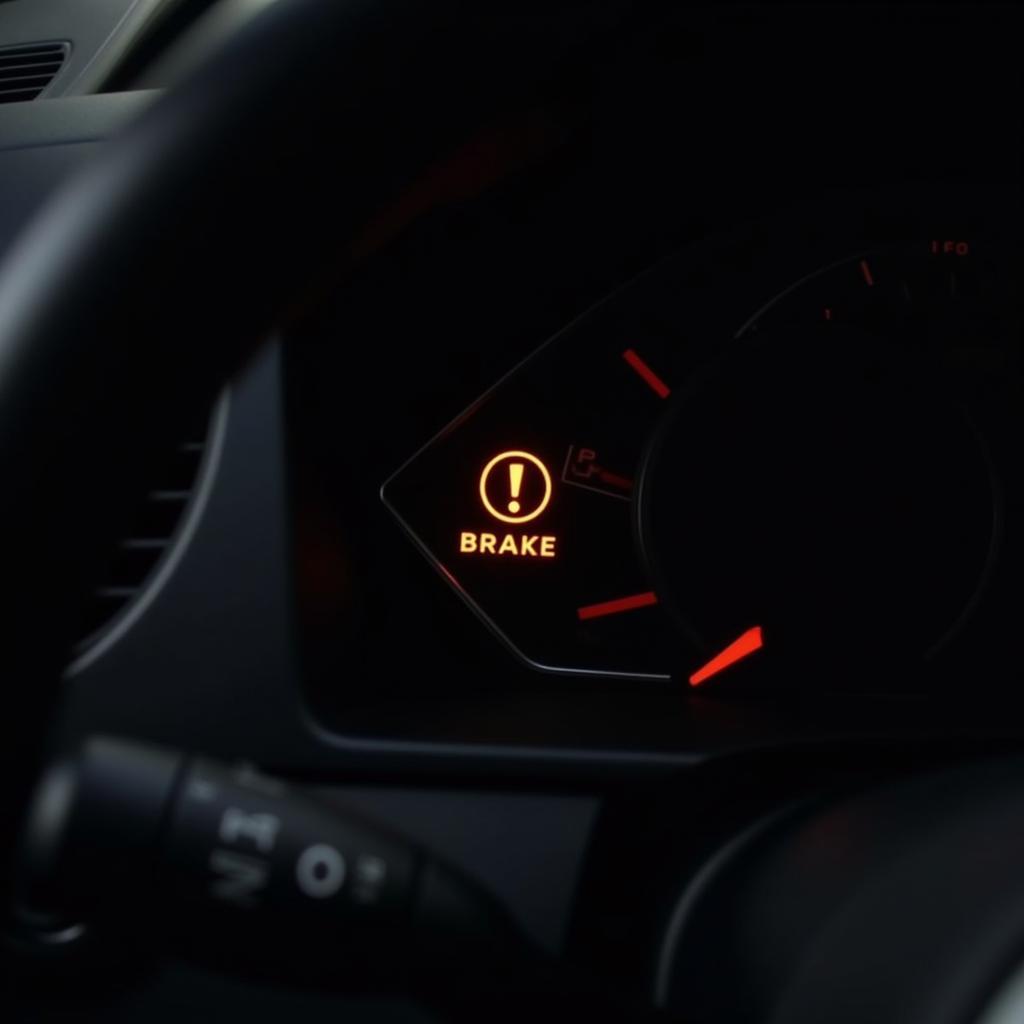This article will delve into the common causes of an intermittent warning dash brake light in a 1996 Toyota Camry 2.2 2-Door Sedan and provide step-by-step troubleshooting guides and potential solutions. The 1996 Camry is a popular model, but its age can lead to various electrical and mechanical issues. A blinking brake light often signals a problem with the braking system, so prompt investigation and repair are essential for safety.
Understanding the Warning Dash Brake Light
The brake warning light, often accompanied by an audible alarm, indicates a potential problem within the braking system. This light can illuminate for several reasons, from a simple issue like a loose connection to a more serious problem with a brake component.
Common Causes of an Intermittent Brake Light
The blinking brake light in your 1996 Camry could be caused by a variety of factors, including:
- Low Brake Fluid: The first and easiest thing to check is the brake fluid level in the reservoir. If the fluid is low, the brake light might be a warning to refill it.
- Faulty Brake Light Switch: The brake light switch, located near the brake pedal, is responsible for activating the brake lights when you press the pedal. A worn-out or faulty switch can cause the brake light to flicker or stay on.
- Loose or Corroded Connections: Loose connections in the wiring harness leading to the brake lights or the brake light switch can cause an intermittent signal.
- Failing Brake Pads or Rotors: Worn brake pads or rotors can trigger the brake light sensor, especially when the pads are worn down to the sensor.
- Faulty Brake Pressure Sensor: A malfunctioning brake pressure sensor can send inaccurate signals to the dashboard, leading to an intermittent brake light.
- ABS System Malfunction: If your Camry is equipped with an Anti-lock Braking System (ABS), a fault within this system could trigger the brake light.
Troubleshooting Steps
Step 1: Check Brake Fluid Level
- Locate the brake fluid reservoir, usually under the hood.
- Open the reservoir lid and check the fluid level. It should be between the “min” and “max” lines.
- If the level is low, add brake fluid of the correct type as specified in your owner’s manual.
- After refilling, start the engine and check if the brake light goes out.
Step 2: Inspect the Brake Light Switch
- Locate the brake light switch, which is often near the brake pedal, behind the brake pedal arm.
- Visually inspect the switch for any signs of damage, wear, or corrosion.
- If the switch appears faulty, replace it with a new one. You can find replacement brake light switches at auto parts stores.
Step 3: Check Wiring Connections
- Look for any loose, corroded, or damaged connections in the wiring harness leading to the brake lights and brake light switch.
- Check the connections at the brake light bulbs and at the brake light switch.
- Clean any corroded connections using a wire brush and apply dielectric grease to prevent further corrosion.
Step 4: Inspect Brake Pads and Rotors
- Visually inspect the brake pads and rotors for wear and tear.
- If the brake pads are worn down to the sensor, you’ll need to replace them.
- If the rotors are severely worn or warped, you may need to replace them as well.
Step 5: Test the Brake Pressure Sensor
- If the previous steps don’t solve the problem, the brake pressure sensor might be faulty.
- A specialized scan tool can be used to read the sensor’s output and diagnose any malfunctions.
Step 6: Diagnose ABS System Issues
- If your Camry has an ABS system, a fault within the system could trigger the brake light.
- A professional mechanic can diagnose and repair any ABS system issues using a scan tool.
Expert Insights from John, Certified Automotive Technician
“It’s crucial to remember that a blinking brake light should never be ignored. It could indicate a serious problem with your braking system. Always err on the side of caution and have a qualified mechanic diagnose the issue,” says John, a certified automotive technician.
Frequently Asked Questions (FAQs)
Q: What if the brake light stays on even after refilling the brake fluid?
A: This indicates a problem beyond low fluid. You should immediately take your car to a mechanic for diagnosis.
Q: Can I safely drive my car with the brake light flashing?
A: While it might seem minor, a flashing brake light could indicate a serious issue with your braking system. It’s best to err on the side of caution and get it checked by a mechanic.
Q: What if the brake light stays on while the brake pedal is not pressed?
A: This usually indicates a problem with the brake light switch, a wiring issue, or a faulty brake pressure sensor.
Q: How do I check the brake pads and rotors for wear?
A: You can visually inspect them through the wheel wells or remove the wheels for a closer look. You can also have a mechanic inspect them during a routine maintenance check.
Q: Can I replace the brake light switch myself?
A: While replacing the brake light switch is a relatively simple DIY job, it’s always advisable to consult your owner’s manual and follow safety precautions. If you are uncomfortable performing this task, a mechanic can do it for you.
Conclusion
A blinking brake light in your 1996 Camry can be caused by a variety of factors, from low brake fluid to a faulty brake light switch. It’s important to address this issue promptly to ensure your safety. Following the troubleshooting steps outlined in this article can help identify the source of the problem and get your car back on the road safely. Remember, if you’re uncertain about any step or if the problem persists, always consult a qualified automotive technician.

